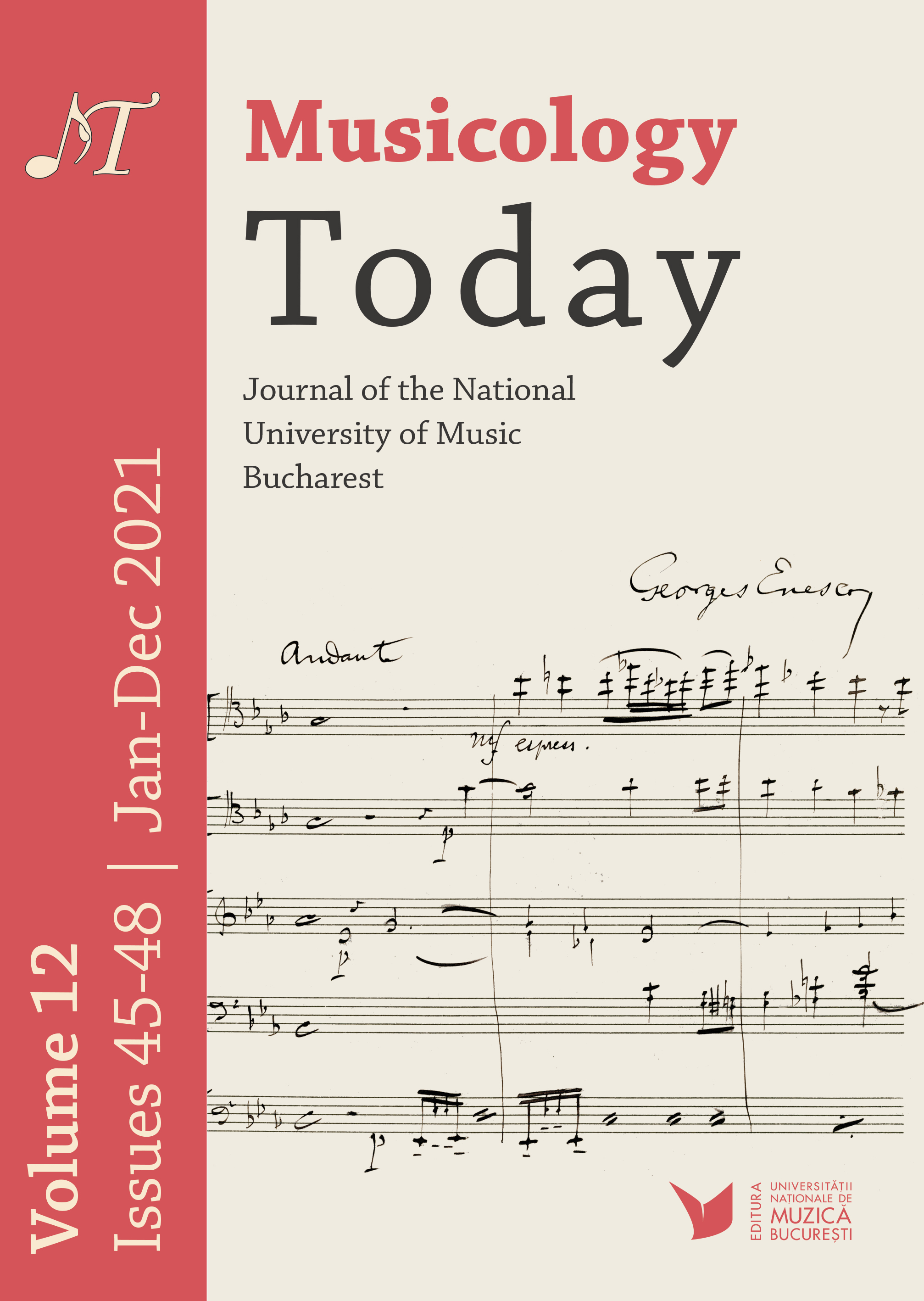Post-Enescian Lineage in Romanian Post-War Music. The Representative Case of Doina Rotaru
Post-Enescian Lineage in Romanian Post-War Music. The Representative Case of Doina Rotaru
Author(s): Vlad VăideanContributor(s): Maria Monica Bojin (Translator)
Subject(s): Cultural history, Music, Post-War period (1950 - 1989)
Published by: Editura Universității Naționale de Muzică din București
Keywords: modernism; dreaming in music; heterophony;
Summary/Abstract: For the Romanian post-war composition, Enescu’s music has long been a reference point: rediscovered with much emotion and admiration in the light of the late first Romanian auditions of his last works, the profile of the national composer proved to be not only a propaganda symbol manipulated by the communist state, but also a real creative ferment, particularly fertile at least for that “golden” generation (which is why it is also called the “post-Enescu” generation) of composers who came to the fore at the end of the 1950s. Thoroughly theorised on an analytical level and variously continued on a creative level, the most specific features of the Enescian style – the melodism of tonal-modal synthesis, the parlando rubato type of rhythm, the technique of continuous micro-variation and, above all, the heterophonic syntax – have come to guide the understanding of the “Romanian specific” in music. The Enescian model has not ceased to inspire even beyond the members of that generation, a fact that is amply proved by the oeuvre of Doina Rotaru, who rose to fame in the 1980: its unmistakable character could be explained partly as a possible instance of how Enescian lyricism would have sounded, had it been detached from the matrix of Classical-Romantic tradition, and transplanted instead in the pastel-coloured tissue of extended instrumental techniques specific to the avant-gardist musical idiom. Of course, this is only one of the components of her personal style. It is, however, much valued and assumed by the composer, sometimes even in the form of symbolic references to Enescian quotations, as is the case at the very end of one of Doina Rotaru’s most recent work – the concerto for violin and orchestra Himere [Chimeras].
Journal: Musicology Today: Journal of the National University of Music Bucharest
- Issue Year: 12/2021
- Issue No: 47
- Page Range: 187-207
- Page Count: 22
- Language: English

